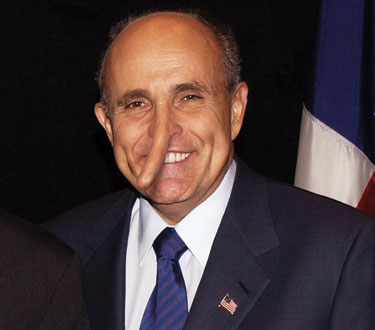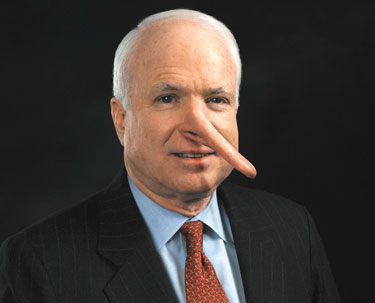|
アメリカ大統領予備選挙
Source: MedicalMarijuanaWorks.org The Marijuana Policy Project's Medical Marijuana PAC will donate $10,000 -- the maximum permitted* -- to the presidential campaigns of Mitt Romney, John McCain, or Rudolph Giuliani if they can prove that any one of their statements about medical marijuana documented on this site are true. Click the individual candidate links for their actual statements and the claims they need to prove. Applications for this cash award will be forwarded to an independent panel of scientists for evaluation. The Marijuana Policy Project will accept submissions for this challenge from December 3 to December 31, 2007. Review and adjudication may take up to 30 days. One cash award is available per campaign. Only individuals operating as official representatives of the campaigns of Mitt Romney, John McCain, or Rudolph Giuliani are eligible. *$5,000 primary, $5,000 general
The Giuliani Challenge In his own words: "You can accomplish everything that you want to accomplish with things other than marijuana, probably better. Meaning, there are pain medications much superior to marijuana. And, marijuana is a very dangerous substance...We'd be much better off telling people the truth; marijuana adds nothing to the array of legal medications and prescription medications that are available for pain relief." – July 10, 2007, Concord, New Hampshire "I believe there are a lot of alternatives people have other than using marijuana." — June 6, 2007, New Castle, New Hampshire Prove it, Mr. Mayor:
The Romney Challenge In his own words: “I am not in favor of medical marijuana. Other pain relievers are available in this country and I support the use of those other pain relievers. And synthetic marijuana, with the elements that are essential, is available.” —July 25, 2007, Bedford, New Hampshire "I believe marijuana is the gateway to drug use that is a plague to our children and a plague to our country. Medical marijuana is a Trojan horse for getting marijuana legalized.” —October 12, 2007 at Conservative Leadership Conference in Las Vegas, Nevada “Marijuana is the entry drug for people trying to get kids hooked on drugs. I don't want medicinal marijuana; there are synthetic forms of marijuana that are available for people who need it for prescription. Don't open the doorway to medicinal marijuana." —July 25, 2007, Bedford, New Hampshire Prove it, Governor Romney:
The McCain Challenge In his own words: "[T]here is a large body of medical opinion that says there is plenty of other medications that are more effective and better and less damaging to one's health to use to relieve pain." — April 25, 2007, at Veteran's Park in Manchester, New Hampshire "Every medical expert I know of, including the AMA, says that there are much more effective and much better treatment for pain then medical marijuana." — September 30, 2007, Deery, New Hampshire Prove it, Senator McCain:
The Scientific Evidence
The statements and data below, from medical journals, official position statements of medical organizations, and other expert sources, are only a small sample of the evidence showing marijuana's safety and efficacy as a medicine. ●Is marijuana an effective medicine, and do medical organizations support its use? "Nausea, appetite loss, pain and anxiety are all afflictions of wasting, and all can be mitigated by marijuana." — Institute of Medicine, "Marijuana and Medicine: Assessing the Science Base," 1999. "When appropriately prescribed and monitored, marijuana/cannabis can provide immeasurable benefits for the health and well-being of our patients." — American Academy of HIV Medicine, 2003. "[T]he Leukemia & Lymphoma Society supports legislation to remove criminal and civil sanctions for the doctor-advised, medical use of marijuana by patients with serious physical medical conditions." — Leukemia & Lymphoma Society, July 2007. "For certain persons, the medical use of marijuana can literally mean the difference between life and death." [emphasis added] — Lymphoma Foundation of America, HIV Medicine Association of the Infectious Diseases Society of America, and American Medical Students Association, Supreme Court amicus brief, 2004. "I have spent my entire career in search of more effective treatments for this awful disease [amyotrophic lateral sclerosis (ALS, aka Lou GehrigÕs disease)]. We have now found that the cannabinoids, the active ingredients in medical marijuana, work remarkably well in controlling the clinical symptoms of ALS. Even more exciting is that we are now discovering that the cannabinoids actually protect nerve cells and may prolong the life of patients with ALS." — Gregory Carter, M.D., clinical professor of Rehabilitation Medicine, University of Washington School of Medicine, and co-director, Muscular Dystrophy Association (MDA)/Amyotrophic Lateral Sclerosis (ALS) Center (testimony submitted to Illinois Senate Public Health Committee, March 2007). "Smoked cannabis was well tolerated and effectively relieved chronic neuropathic pain from HIV-associated sensory neuropathy." — Donald I. Abrams et al., "Cannabis in Painful HIV-associated Sensory Neuropathy: A Randomized Placebo-controlled Trial," Neurology 68 (2007): 515-21. (NOTE: There are presently no FDA-approved treatments for HIV/AIDS-related peripheral neuropathy) "For a significant number of patients, clinical experience and research confirm that marijuana serves as the only effective medicine for relieving pain, suppressing nausea or stimulating appetite. Numerous studies by blue-ribbon government panels and federally funded, peer-reviewed scientific studies have consistently found that marijuana is effective for treating certain debilitating symptoms." — American Pain Foundation, American Medical Women's Association, Lymphoma Foundation of America, American Nurses Association, California Nurses Association, AIDS Action Council, National Women's Health Network, Doctors of the World-USA, Gay Men's Health Crisis, Amici Curiae in Support of Petitioner, Ross v. Ragingwire, 2006 WL 3244938 (August 7, 2006 Appellate Brief). "Fifty-six patients who had no improvement with standard antiemetic agents were treated and 78% demonstrated a positive response to marijuana É inhalation marijuana is an effective therapy for the treatment of nausea and vomiting due to cancer chemotherapy." — Vincent Vinciguerra et al., "Inhalation Marijuana as an Antiemetic for Cancer Chemotherapy," New York State Journal of Medicine 88 (1988): 525-7. "The American Academy of Addiction Psychiatry endorses the Institute of Medicine (IOM) report supporting the therapeutic value of cannabinoid drugs for pain relief, control of nausea and vomiting and appetite stimulations for debilitating conditions such as AIDS. We are in favor of compassion for the ill and the availability of marijuana for medical purposes based on current evidence." — American Academy of Addiction Psychiatry, June 2002. "[A] federal policy that prohibits physicians from alleviating suffering by prescribing marijuana for seriously ill patients is misguided, heavy-handed, and inhumane." — Dr. Jerome Kassirer, "Federal Foolishness and Marijuana," New England Journal of Medicine, January 30 1997, editorial. "If Cannabis were unknown, and bio-prospectors were suddenly to find it in some remote mountain crevice, its discovery would no doubt be hailed as a medical breakthrough. Scientists would praise its potential for treating everything from pain to cancer, and marvel at its rich pharmacopoeia — many of whose chemicals mimic vital molecules in the human body." — The Economist, "Reefer Madness, Marijuana Is Medically Useful Whether Politicians Like It or Not," April 29, 2006. "The clinical potential of the cannabinoids is large É Cannabinoids inhibit pain in virtually every experimental pain paradigm." — David Baker et. al., "The Therapeutic Potential of Cannabis," The Lancet Neurology 2 (2003): 291-98. "[The AAFP accepts the use of medical marijuana] under medical supervision and control for specific medical indications." — American Academy of Family Physicians, 1989, reaffirmed in 2001. ●Are there adequate alternatives available, including "synthetic marijuana" (the prescription THC pill dronabinol (Marinol)), that work as well as whole marijuana? "[I]t cannot seriously be contested that there exists a small but significant class of individuals who suffer from painful chronic, degenerative, and terminal conditions, for whom marijuana provides uniquely effective relief." [emphasis added] — Lymphoma Foundation of America, HIV Medicine Association of the Infectious Diseases Society of America, and American Medical Students Association, Supreme Court amicus brief, 2004. In a study of HIV/AIDS patients, it took 8 times the standard dose of Marinol to come close to the effectiveness of low-potency marijuana supplied by the federal government. Despite the increased Marinol dose, only whole marijuana produced statistically significant improvements in patients' levels of hunger, desire to eat, and quality of sleep. — Margaret Haney et al., "Dronabinol and Marijuana in HIV-Positive Marijuana Smokers: Caloric Intake, Mood, and Sleep," Journal of Acquired Immune Deficiency Syndromes 45, no. 5 (2007): 545-54. "Marinol (a synthetic form of THC) is classified as a schedule III controlled substance while marijuana is classified as schedule I — despite the fact that Marinol contains a THC metabolite that is three times more psychoactive than the THC delivered to the lungs by smoked cannabis." — American Pain Foundation, American Medical Women's Association, Lymphoma Foundation of America, American Nurses Association, California Nurses Association, AIDS Action Council, National Women's Health Network, Doctors of the World-USA, Gay Men's Health Crisis, Amici Curiae in Support of Petitioner, Ross v. Ragingwire, 2006 WL 3244938 (August 7, 2006 Appellate Brief). "Patients who smoked marijuana experienced 70-100% relief from nausea and vomiting, while those who used the THC capsule experienced 76-88% relief." — "Effects of Smoked Cannabis and Oral Æ9-Tetrahydrocannabinol on Nausea and Emesis After Cancer Chemotherapy: A Review of State Clinical Trials," Journal of Cannabis Therapeutics 1 (2002): 29-42. "[O]ral administration is probably the least satisfactory route for cannabis owing to sequestration of cannabinoids in fat from which there is slow and variable release into plasma. In addition, significant first-pass metabolism in the liver, which degrades THC, contributes to the variability of circulating concentrations of orally administered cannabinoids, which makes dose titration more difficult and therefore increases the potential for adverse psychoactive effects. Smoking ... allows more accurate dose titration." [emphasis added] — David Baker et al., "The Therapeutic Potential of Cannabis," The Lancet Neurology 2 (2003): 291-98. "[T]here will likely always be a subpopulation of patients who do not respond well to other medications. ... The critical issue is not whether marijuana or cannabinoid drugs might be superior to the new drugs, but whether some group of patients might obtain added or better relief from marijuana or cannabinoid drugs. ... Although some medications are more effective than marijuana for these problems, they are not equally effective in all patients." — Institute of Medicine, "Marijuana and Medicine: Assessing the Science Base," 1999. "It is well recognized that Marinol's oral route of administration hampers its effectiveness because of slow absorption and patients' desire for more control over dosing." [emphasis added] — Institute of Medicine, "Marijuana and Medicine: Assessing the Science Base," 1999. "Not all the observed effects with cannabis can be ascribed to THC alone, other plant constituents may significantly modulate its action. ... Pure natural and synthetic [cannabinoid] compounds do not have disadvantages, but my not have the overall therapeutic effect of the herb." — Barbara Costa, "On the Pharmacological Properties of Æ9-Tetrahydrocannabinol (THC)," Chemistry & Biodiversity 4, no. 8 (2007): 1664-77. "When we look at the pharmaecopia, when taken by mouth, delta-9 THC [Marinol] has a very low 6 to 20 percent absorption, and it's very variable from one person to another... Smoking THC, the THC is rapidly absorbed into the blood stream and redistributed with a considerable amount of it destroyed by combustion. Peak plasma levels are achieved at the very end of smoking and decline rapidly over 30 minutes, as if it were given intravenously, whereas, if taken by mouth, it's a slow and doesn't reach very high peaks and takes a long time to disappear. The amount of THC one is exposed to might be the same, but certainly the effects are much different. In patients who say, 'I can control the onset and the duration much easier if I smoke than if I swallow it' are telling us just what we know from the pharmaecopia." — Donald Abrams, M.D., professor at the University of California, San Francisco who has conducted U.S. Government-approved research into the effects of smoked marijuana and AIDS patients, May 17, 1999. "Paradoxically, dronabinol [Marinol], a drug that contains one of the active ingredients in marijuana (tetra-hydrocannabinol), has been available by prescription for more than a decade. But it is difficult to titrate the therapeutic dose of this drug, and it is not widely prescribed. By contrast, smoking marijuana produces a rapid increase in the blood level of the active ingredients and is thus more likely to be therapeutic. Needless to say, new drugs such as those that inhibit the nausea associated with chemotherapy may well be more beneficial than smoking marijuana, but their comparative efficacy has never been studied." — Jerome Kassirer, M.D., former managing editor of the New England Journal of Medicine, January 1997. ●Is marijuana safe for use as a medicine, or is it too dangerous? "Marijuana, in its natural form, is one of the safest therapeutically active substances knownÉIt would be unreasonable, arbitrary, and capricious for the DEA to continue to stand between those sufferers and the benefits of the substance." — Francis L. Young, DEA Chief Administrative Law Judge, 1988. "[F]or cancer patients with advanced cancers who want to improve the quality of their life, a risk versus benefit analysis [of smoked medical marijuana] weighs heavily on the benefit side." — Cancer Monthly, May 2006. "Present evidence indicates that [cannabinoids, marijuana's active components] are remarkably safe drugs, with a side-effects profile superior to many drugs used for the same indications." — British Medical Association, 1997. "[M]arijuana has an extremely wide acute margin of safety for use under medical supervision and cannot cause lethal reactions." — American Public Health Association, 1995. "The evidence is overwhelming that marijuana can relieve certain types of pain, nausea, vomiting and other symptoms caused by illnesses like multiple sclerosis, cancer and AIDS — or by the harsh drugs sometimes used to treat them. And it can do so with remarkable safety. Indeed, marijuana is less toxic than many of the drugs that physicians prescribe every day." — Former U.S. Surgeon General Joycelyn Elders, M.D., "Myths About Medical Marijuana," Providence Journal, March 26, 2004. "[M]arijuana/cannabis has a wide margin for safety for use under prescribed supervision and it is effective for numerous conditions." —American Nurses Association, 2003. "[E]xcept for the harms associated with smoking, the adverse effects of marijuana use are within the range of effects tolerated for other medications. ... [We recommend development of] a nonsmoked rapid-onset cannabinoid drug delivery system." — Institute of Medicine, "Marijuana and Medicine: Assessing the Science Base," 1999. ●Studies of marijuana vaporizers show that the problem of a safe, nonsmoked delivery system has now been solved: "What is currently needed for optimal use of medicinal cannabinoids is a feasible, nonsmoked rapid-onset delivery system. With the Volcano, a safe and effective delivery system appears to be available to patients." — Arno Hazenkamp et al., "Evaluation of a Vaporizing Device (Volcano(r)) for the Pulmonary Administration of Tetrahydrocannabinol," Journal of Pharmaceutical Sciences 95, no. 6 (2006): 1308-1317. "Vaporization of marijuana does not result in exposure to combustion gases, and therefore is expected to be much safer than smoking marijuana cigarettes." — Donald I. Abrams et al. "Vaporization as a Smokeless Cannabis Delivery System: A Pilot Study," Clinical Pharmacology & Therapeutics 82 (2007,): 572-8. ●Is marijuana a "gateway drug" that causes people to use hard drugs like cocaine, heroin, etc.? Do medical marijuana laws cause increased use of marijuana or hard drugs by teens? "There is no evidence that marijuana serves as a stepping stone on the basis of its particular physiological effect. ... "[I]t does not appear to be a gateway drug to the extent that it is the cause or even that it is the most significant predictor of serious drug abuse; that is, care must be taken not to attribute cause to association." [emphasis in original] — Institute of Medicine, "Marijuana and Medicine: Assessing the Science Base," 1999. "[A]vailable evidence does not favor the marijuana gateway hypothesis over the alternative hypothesis that marijuana and hard drug initiation are correlated because both are influenced by individuals' heterogeneous liabilities to try drugs." — Andrew R. Morral et al., "Reassessing the Marijuana Gateway Effect," Addiction 97, no. 12 (2002): 1493-1504. "Consistent with other studies of the liberalization of cannabis laws, [this study] indicate[s] that medical cannabis laws do not increase use of the drug." [emphasis added] — D.M. Gorman and J.C. Huber, "Do Medical Cannabis Laws Encourage Cannabis Use?" International Journal of Drug Policy 18, no. 3 (2007): 160-7. "In California, where adolescent marijuana use had risen steadily in the years prior to passage of its medical marijuana law in 1996, marijuana use by 9th graders in the past 6 months dropped 47% from 1996 to 2006." — "Report to Attorney General Bill Lockyer: Compendium of Results, 11th Biennial California Student Survey, Grades 7, 9, and 11, 2005-6," table 2.2. "Use of marijuana by youth, which had been on an upward trend since the early 1990s at all three grade levels, did not intensify as predicted by the 'wrong message' theory. Instead, it leveled off between 1995-96 and the current (1997-98) survey. There is no evidence supporting that the passage of Proposition 215 increased marijuana use during this period." [emphasis added] — Rodney Skager, Greg Austin, and Mamie M. Wong, "Marijuana Use and the Response to Proposition 215 Among California Youth, a Special Study From the California Student Substance Use Survey (Grades 7, 9, and 11), 1997-98," p. 7. In the 10 medical marijuana states that have before-and-after data, none has had a statistically significant increase in teen use of marijuana. In most states, teen marijuana use has declined since medical marijuana became legal. For a detailed analysis of official state surveys, see www.mpp.org/teens. Say It Straight: The Medical Myths of Marijuana Department of Justice, 1999 There are over 10,000 scientific studies that prove marijuana is a harmful addictive drug. There is not one reliable study that demonstrates marijuana has any medical value. |




